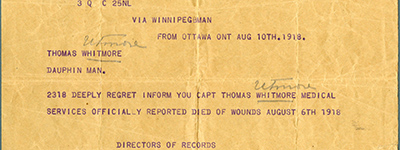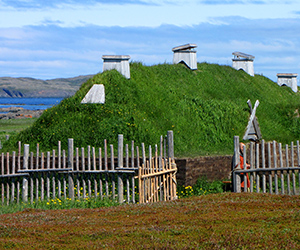CANADA HISTORY - Politics-Symbols
The Coat of Arms
.jpg)
The Coat of Arms of Canada, formally known as the Royal Arms of Canada, is a visual representation of the nation’s heritage, history, and identity, intricately tied to its monarchical system of government. The design of the arms reflects Canada's historical connections to England, Scotland, Ireland, and France, symbolizing both its ties to the British Crown and the contributions of diverse peoples from these nations to the development of Canada. Adopted by royal proclamation on November 21, 1921, during the reign of King George V, the Coat of Arms remains a potent emblem of Canada's sovereignty and its status as a constitutional monarchy.
Historical Context and Design
Before delving into the elements that make up the Coat of Arms, it is important to understand the historical context in which it was created. Following Confederation in 1867, Canada had been using a somewhat unofficial combination of provincial symbols and British heraldry. As Canada’s identity and autonomy grew—particularly in the wake of the First World War—there was a clear desire for a unique national symbol that encapsulated Canada's history, its people, and its allegiance to the monarchy. The Canadian government petitioned King George V to grant Canada its own arms, resulting in the design that has become one of the nation’s most important symbols.
The Canadian Coat of Arms is highly symbolic, with each element reflecting different aspects of Canada's heritage and its relationship with other nations, particularly within the British Commonwealth. The overall design of the arms centers around a shield divided into five sections, each containing an emblem significant to Canada’s cultural and historical development.
The Shield: Emblems of Canada’s Heritage
The shield, or escutcheon, at the center of the arms is divided into five parts, representing England, Scotland, Ireland, France, and Canada itself. These emblems are derived from the royal arms of the nations that played a key role in Canada's early settlement and colonization.
The First Division: The Arms of England
The top left section of the shield bears three gold lions passant guardant (walking with heads turned to face the viewer) on a red field, a symbol that has been used as the royal arms of England since the reign of Richard the Lionheart in the 12th century. The inclusion of the English lions represents Canada's historical connection to England, particularly through British colonization, and the continuing role of the British monarchy in Canadian governance. It also serves as a reminder of the significant contributions of English settlers to Canada’s development.
The Second Division: The Arms of Scotland
Adjacent to the English lions is the emblem of Scotland: a red lion rampant (standing upright) on a yellow field, encircled by a red border adorned with fleurs-de-lis. This symbol has been associated with the Scottish monarchy since the 13th century and represents the Scottish contribution to the settlement of Canada. Many Scots immigrated to Canada, particularly during the 18th and 19th centuries, and played crucial roles in the fur trade, politics, and military life. The Scottish influence is still felt in Canadian culture today, particularly in provinces like Nova Scotia, whose very name means “New Scotland.”
The Third Division: The Arms of Ireland
Below the Scottish lion is the harp of Ireland, depicted in gold on a blue field. The harp has long been a symbol of Ireland and has appeared in Irish heraldry since the medieval period. Its inclusion in the Canadian Coat of Arms acknowledges the important role that Irish immigrants played in the settlement and development of the country. Many Irish arrived in Canada throughout the 19th century, especially during the Great Famine, and they had a profound influence on the cultural, religious, and political landscape of the nation.
The Fourth Division: The Arms of France
The bottom left section of the shield bears three gold fleurs-de-lis on a blue field, a symbol of the royal arms of France that dates back to the reign of King Charles V in the 14th century. This division honors Canada’s French heritage, acknowledging the early settlement of New France and the lasting impact of French culture, language, and law on the nation. The fleur-de-lis reflects the deep ties between Canada and France, particularly in Quebec, where French remains the official language and the culture retains a distinct French character. French Canadians were instrumental in shaping the country, and their contributions are central to Canada's national identity.
The Fifth Division: The Emblem of Canada
The final section of the shield, located at the bottom center, is uniquely Canadian. It features a sprig of three maple leaves, rendered in red and joined by a single stem. The maple leaf had already become a symbol of Canada by the 19th century, frequently used in literature, military insignia, and coins. Its inclusion in the Coat of Arms reflects Canada’s distinct national identity, separate from its European heritage. The choice of three leaves joined on one stem is often interpreted as a symbol of unity, representing the country’s diverse peoples, English, French, and Indigenous, who form the fabric of Canadian society.
The Crest: A Crowned Lion
Above the shield sits the crest, a traditional feature in heraldry that signifies authority and status. The Canadian crest features a crowned gold lion standing on a royal crown, holding a red maple leaf in its paw. The lion symbolizes strength, courage, and loyalty to the monarchy, while the royal crown is a direct reference to Canada's status as a constitutional monarchy under the British Crown. The red maple leaf in the lion's paw reinforces the idea that Canada, while loyal to the Crown, has its own distinct identity.
The Supporters: A Lion and a Unicorn
Flanking the shield are two animals: a lion on the left and a unicorn on the right. These are the traditional supporters found in the royal arms of the United Kingdom and have been carried into Canada’s arms to represent the country’s historical ties to Britain.
The Lion: The lion on the left is gold, symbolizing England, and it holds a Union Jack flag. Like the crest’s lion, this figure represents strength, bravery, and loyalty, but it also reflects Canada’s historical connection to England and the British Empire.
The Unicorn: On the right is a silver unicorn with a gold horn, symbolizing Scotland. In mythology, the unicorn is a symbol of purity and power, and in Scottish heraldry, it has been used since the reign of King James I. The unicorn holds a flag bearing the fleurs-de-lis, representing Canada’s French heritage.
The Motto and Ribbon: “Desiderantes Meliorem Patriam”
Beneath the shield is a scroll bearing the Latin motto, “Desiderantes Meliorem Patriam,” which translates to “They desire a better country.” This phrase is taken from the Bible (Hebrews 11:16) and was adopted as the motto of the Order of Canada, one of the nation’s highest civilian honors. It reflects the aspirations of Canadians to build a better society and echoes the ideals of service, unity, and the common good that underpin the country’s national character.
The Compartment: Floral Emblems of Canada
The base of the Coat of Arms, known as the compartment, features the floral emblems of the four founding nations of Canada. It includes a red rose (England), a thistle (Scotland), a shamrock (Ireland), and a fleur-de-lis (France). These flowers intertwine to symbolize the harmony and unity among the diverse peoples who contributed to Canada’s founding and growth. The inclusion of these emblems represents both Canada’s multicultural roots and its peaceful coexistence of different traditions.
The Royal Crown
At the very top of the Coat of Arms is the Royal Crown, which represents Canada's constitutional monarchy and the country's association with the British Commonwealth. The crown symbolizes the authority of the monarch as the head of state and is a reminder of Canada's historical connection to Britain.
Evolution and Adoption of the Canadian Coat of Arms
The adoption of the Coat of Arms in 1921 was a response to a growing sense of Canadian national identity, particularly after the First World War, where Canada had demonstrated its ability to act as an independent nation on the world stage. However, even after its official adoption, changes and additions were made to the arms to reflect Canada's evolving identity. For example, the maple leaves were originally depicted in green but were changed to red in 1957 to align with the red maple leaf used on the national flag adopted in 1965.
In 1994, the motto of the Order of Canada, “Desiderantes Meliorem Patriam,” was added to the scroll below the shield, reinforcing the link between the arms and the values of service and citizenship.
A Symbol of Canada’s Identity
The Coat of Arms of Canada is much more than a simple heraldic design—it is a profound symbol of the nation’s history, diversity, and values. Each element, from the English lions to the French fleurs-de-lis and the Canadian maple leaves, reflects the multiple cultural threads that have woven together to form the fabric of Canadian identity. The arms also emphasize Canada’s ongoing relationship with the British Crown and its place within the Commonwealth, while simultaneously celebrating its distinctiveness as a nation.
As Canada continues to grow and evolve, its Coat of Arms remains a reminder of the country’s origins, its shared history, and its aspirations for the future. It encapsulates the unity, diversity, and strength that define the nation, making it an enduring symbol of Canadian sovereignty and pride.
Cite Article : Reference: www.canadahistory.com/sections/documents/documents.html
Source: NA



